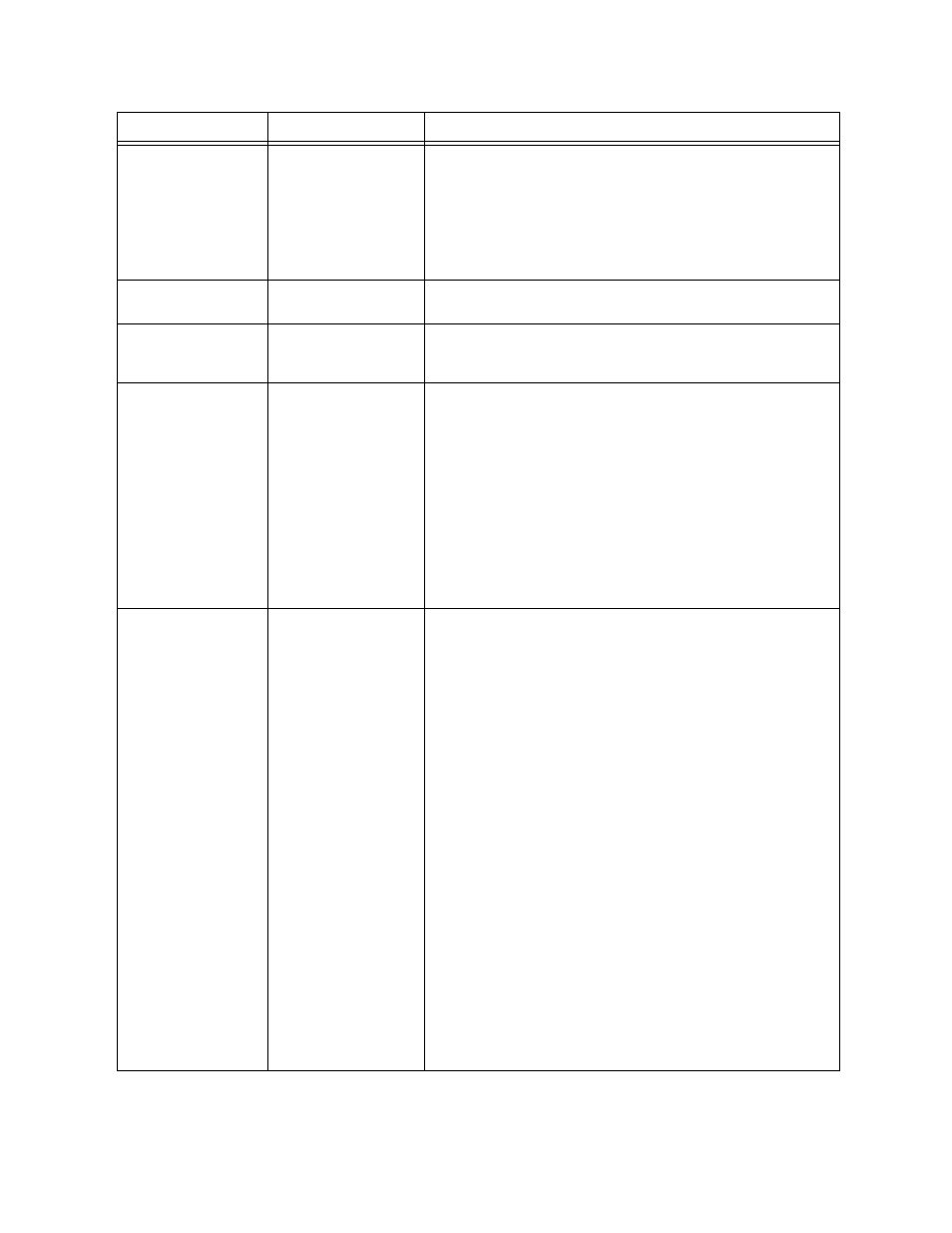Verilink NCC 2020 (880-503284-001) Product Manual User Manual
Page 29

Configuration
Verilink NCC 2020 User Manual
3-7
C1-C5) canned
config
Allows selection of
any of five complete
configurations which
all use CSU mode (no
DIU 21xx) and vary
according to framing
and line coding on
EQ and Net sides.
Canned configuration #1, EQPT=SF/AMI NET=ESF/AMI.
Canned configuration #2, EQPT=ESF/AMI NET=ESF/AMI.
Canned configuration #3, EQPT=SF/AMI NET=ESF/B8ZS.
Canned configuration #4, EQPT=SF/B8ZS NET=ESF/B8ZS.
Canned configuration #5, EQPT=ESF/B8ZS NET=ESF/B8ZS.
S) save csu config
Stores the current
CSU configuration.
Configuration information for other modules in the node
can be saved in non-volatile RAM in the NCC 2020.
Q) restore csu config Restores stored
configuration.
If the configuration for a module has been previously
stored, a replacement module can be placed in the same
slot and sent the stored configuration.
A) diu bus
Selects both the
“
” in which the
CSU will operate
(CSU, Mux or Drop
and Insert) as well as
which midplane data
bus, if any, will be
used to exchange
data with any DIU
21xx modules.
In Mux mode, the
NCC 2020 EQPT LED
is always green.
(1)NONE — no data bus, CSU is in CSU mode.
(2)A — Mux mode using data bus A.
(3)B — Mux mode using data bus B.
(4)C — Mux mode using data bus C.
(5)B,D&I EQ — Drop and Insert mode toward equipment
(some DSX-1 timeslots routed to LOCAL DIU) rarely or never
used.
(6)A,D&I NET — Drop and Insert toward the Net (some
network timeslots routed to DSX-1 port, some others to one
or more DIU modules). This is typical Drop and Insert.
B) diu clock
Selects the source of
the Transmit Clock
used by the CSU to
transmit data toward
the T1 network.
Note that in CSU
mode (DIU Bus =
NONE), this option is
ignored, the NCC
2020 performs as
though THRU timing
were selected.
In Drop and Insert
mode, use of THRU
timing is suggested.
In Mux mode, if the
far end CSU is set for
INT clock or if the
carrier is using a
DACS to provide a
clock, then NET
(recovered network
clock) is required.
(1)THRU — The CSU derives transmit clock from the
transmit datastream of the DSX-1 equipment, automatically
selected in CSU mode, recommended in Drop and Insert
mode, and invalid in Mux mode.
(2)INT — The CSU uses an internal oscillator to generate a
1.544 MHz clock. Used only in Mux mode, and then only at
one end of a T1 on which the carrier uses no DACS.
(3)EXT 422 — The CSU uses a balanced clock signal
provided by an external source through the DIN connector
on the rear connector module.
(4)EXT TTL — The CSU uses an unbalanced (0V to +5V) clock
signal provided by an external clock source through the DIN
connector on the rear connector module.
(5)NET — The CSU uses the clock recovered from receive
data on the T1 network port for the transmit clock, this is
most often the desired option in Mux mode and is required
if the network provides a clock (uses a DACS).
(6)EQ — The CSU recovers the DSX-1 T1 transmit clock to
time the network transmit.
(7)TIU — The CSU uses a clock on data bus C produced by
an optional TIU 2850 module installed in the same shelf.
(8)DIU — The CSU uses a clock provided by DTE connected
to a data port on a DIU 213x module. Tail circuit timing
requires this option.
Menu Option
Description
Instructions
